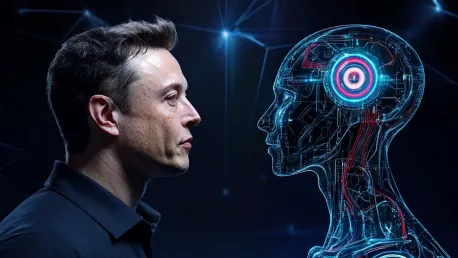Under the ambitious leadership of CEO Elon Musk, Tesla is positioning itself at the frontier of technological advancement with its focus on artificial intelligence (AI), robotics, and self-driving cars. The company’s vision for the next decade includes an audacious $10 trillion revenue projection from its humanoid robot, Optimus, which aims to revolutionize tasks by replacing humans in repetitive and hazardous jobs. Introduced during Tesla’s AI Day in 2021, Optimus represents Tesla’s leap toward automation and efficiency in diverse sectors, marking a significant move toward enhancing productivity and safety. However, attaining large-scale humanoid automation is fraught with considerable challenges, including high training demands and concerns about economic viability. As Tesla banks on these cutting-edge technologies, the integration of AI, robotics, and self-driving systems could redefine modern industry standards and elevate the company’s market position.
The scope of Tesla’s ambitions extends far beyond just cars. While its core revenue generator remains its automotive business, the company’s innovative endeavors in AI and robotics underline a broader vision for the future. In 2024, Tesla maintained its status as the world’s second-largest electric vehicle (EV) manufacturer by selling 1.77 million vehicles. Notably, the Model Y achieved the distinction of being the best-selling car globally, and the Cybertruck similarly led in the electric pickup truck segment in the U.S. Despite these successes, Tesla faces hurdles in maintaining its automotive growth, indicated by a mere 2% revenue increase to $25.2 billion in the fourth quarter of 2024, alongside an 8% decline in automotive revenue, which was partly cushioned by gains in energy generation and storage segments.
Expanding Horizons Beyond Automotive
To stay competitive, especially with increasing competition from Chinese automakers, Tesla is investing heavily in self-driving technology. The autonomous driving market, projected by McKinsey to reach $300-$400 billion by 2035, represents a potentially lucrative frontier for the company. Tesla leverages its substantial on-road dataset and advanced supercomputer, Dojo, to refine its self-driving capabilities. By advancing these technologies, Tesla aims to transition to a software-as-a-service (SaaS) model for its self-driving technology. Such a shift could significantly boost its margins through autonomous ride-hailing, AI-driven fleet management, and software subscription services, reducing its reliance on the variable nature of car sales.
Tesla’s investment in self-driving technology is not just about enhancing the driving experience; it’s about setting a new benchmark for the future of transportation. The integration of AI and robotics goes hand in hand with Tesla’s overarching mission to increase efficiency and reduce human error across various facets of mobility. As self-driving technology becomes more viable, the potential for transforming urban environments grows. Autonomous vehicles equipped with advanced AI could lead to smarter, more interconnected cities where traffic, safety, and energy consumption are managed more efficiently. Tesla’s forward-thinking approach underscores the importance of developing a reliable and scalable self-driving platform that can adapt to the dynamic needs of urban and rural settings alike.
The Strategic Importance of AI and Robotics
Tesla’s strategic focus on AI and robotics isn’t limited to self-driving cars; it aims to revolutionize broader industrial applications. Optimus, Tesla’s humanoid robot, exemplifies this ambition. Introduced as a prototype during Tesla’s AI Day in 2021, Optimus is designed to handle repetitive and hazardous tasks, thereby freeing up human labor for more creative and complex endeavors. The $10 trillion revenue projection for Optimus reflects Tesla’s confidence in the potential market for humanoid robots. Yet, the journey to achieve large-scale adoption of humanoid robotics isn’t without obstacles. High training demands and the need to ensure economic viability are significant challenges that Tesla must navigate.
The introduction of Optimus also signals a shift in how companies approach labor and productivity. Automation through humanoid robots like Optimus could lead to a dramatic change in industries ranging from manufacturing to logistics. By employing advanced AI, these robots can learn and adapt to new tasks, providing a scalable solution for labor-intensive industries. However, the widespread use of such technology also raises questions about job displacement and the ethical implications of replacing human workers with robots. Tesla’s approach aims to balance these concerns by promoting the idea that robots can perform dangerous and monotonous tasks, thereby enhancing overall worker safety and allowing humans to engage in more meaningful work.
Navigating the Future
Under the ambitious leadership of CEO Elon Musk, Tesla is positioning itself at the forefront of technological advancement with a strong focus on artificial intelligence (AI), robotics, and self-driving cars. The vision for the next decade includes an audacious $10 trillion revenue projection from its humanoid robot, Optimus, introduced during Tesla’s AI Day in 2021. This robot aims to revolutionize various tasks by replacing humans in repetitive and dangerous jobs, thus enhancing productivity and safety across diverse sectors. However, the path to widespread humanoid automation presents significant challenges, including high training demands and concerns about economic viability.
Tesla’s ambitions extend far beyond the automotive industry. While cars remain the core revenue generator, the company’s innovative efforts in AI and robotics signify a broader future vision. In 2024, Tesla upheld its status as the second-largest EV maker globally, selling 1.77 million vehicles. The Model Y was the best-selling car worldwide, and the Cybertruck led in the electric pickup segment in the U.S. Despite this, Tesla encountered hurdles, evidenced by a modest 2% revenue increase to $25.2 billion in Q4 2024, alongside an 8% decline in automotive revenue, partially offset by gains in energy generation and storage segments.









